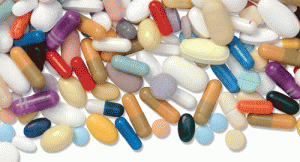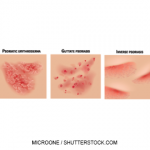 Tildrakizumab Promising for Plaque Psoriasis
Tildrakizumab Promising for Plaque Psoriasis
Tildrakizumab (MK-3222) is an interleukin (IL)-23p19 inhibitor antibody designed to selectively block IL-23. The treatment has met its primary safety and efficacy endpoints in two Phase 3 clinical trials in patients with moderate to severe plaque psoriasis.1 In these placebo-controlled studies, the co-primary efficacy endpoints were: 1) the percentage of patients achieving a Psoriasis Area Sensitivity Index (PASI) 75 response at Week 12, and 2) the percentage of patients with a Physician’s Global Assessment (PGA) score of clear or minimal with at least a two-grade reduction from baseline at Week 12. Both measurements were compared with placebo-treated patients. There were no new safety signals.
The second of the two studies (Study MK-3222-011) also had a comparator arm of patients using etanercept. A secondary efficacy endpoint of the study was the comparison of 200 mg tildrakizumab and etanercept on PASI 75 and PGA. The 200 mg dose of tildrakizumab was superior to etanercept on both PASI 75 and PGA endpoints at Week 12. A dose of 100 mg tildrakizumab also showed superiority to etanercept, but only on the PASI 75.
FDA Approves Adalimumab for Non-Infectious Panuveitis
Adalimumab (Humira) has garnered its 10th FDA-approved indication.2 It has been approved for treating non-infectious intermediate, posterior and panuveitis. This approval marks the first and only FDA-approved, non-corticosteroid treatment for adults with non-infectious intermediate, posterior and panuveitis.
By blocking tumor necrosis factor alfa (TNF-α), inflammation in uveitis is diminished. This approval is based on the results of two Phase 3 studies in adults, VISUAL-I and VISUAL-II. Patients were randomized 1:1 and treated with a subcutaneous injection of 80 mg adalimumab as a baseline-loading dose followed by 40 mg adalimumab at Week 1 and 40 mg adalimumab every other week for up to 80 weeks.
The primary endpoint in the VISUAL-I and VISUAL-II studies was time to treatment failure, defined as having one or more of the following components present in at least one eye: increase in anterior chamber cells or vitreous haze, new chorioretinal or vascular lesions, or decrease in visual acuity. In VISUAL-I, the median time to treatment failure was prolonged by 87% (three months for placebo-treated patients vs. 5.6 months for adalimumab-treated patients). In VISUAL-II, the median time to treatment failure was 8.3 months for placebo-treated patients. But researchers were unable estimate the time to treatment failure (>18 months) for adalimumab-treated patients because more than half of these patients did not experience a treatment failure. No new safety risks were identified in these patients.
Michele B. Kaufman, PharmD, CGP, RPh, is a freelance medical writer based in New York City and a pharmacist at New York Presbyterian Lower Manhattan Hospital.
References
- Sun Pharmaceutical Industries Ltd. News release: Sun Pharma announces positive results of two pivotal phase 3 clinical trials of tildrakizumab in patients with moderate to severe plaque psoriasis. 2016 May 4.
- AbbVie Inc. News release: AbbVie’s HUMIRA (adalimumab) receives U.S. Food and Drug Administration approval to treat adults with non-infectious intermediate, posterior and panuveitis. 2016 Jun 30.

